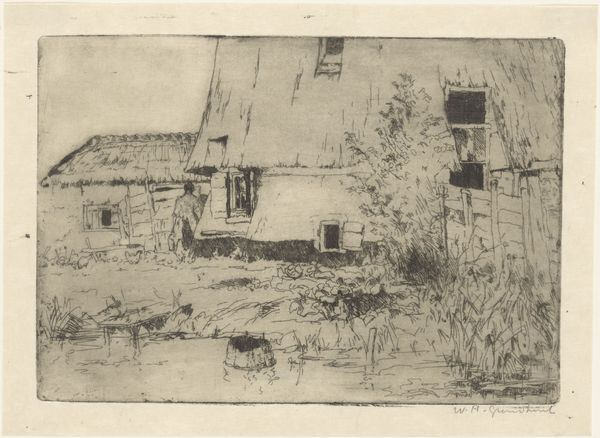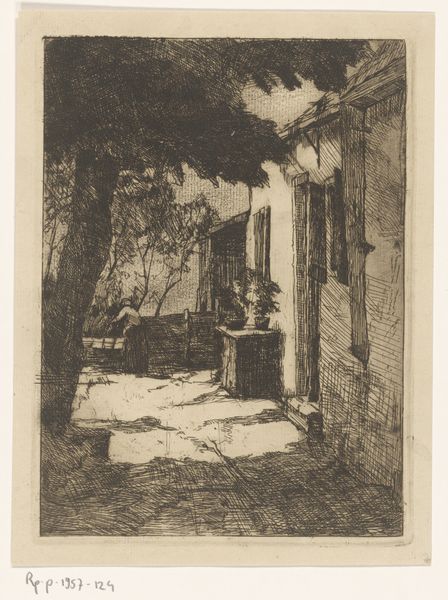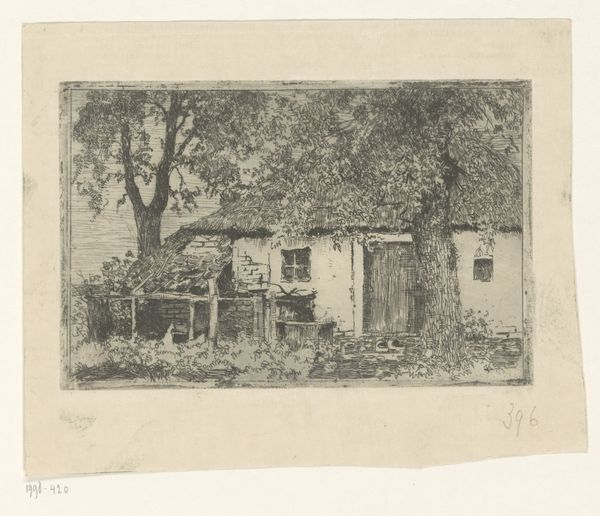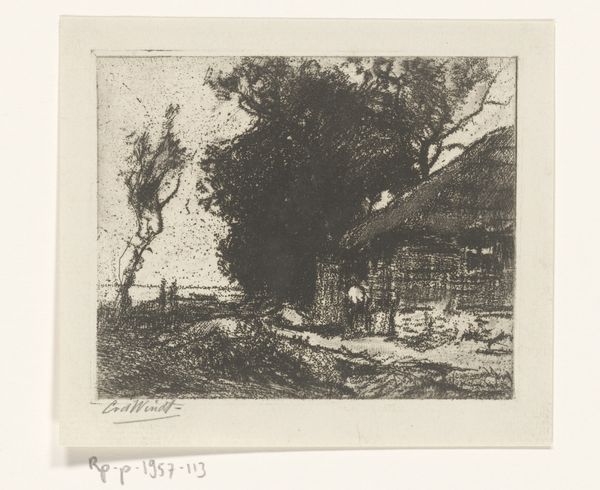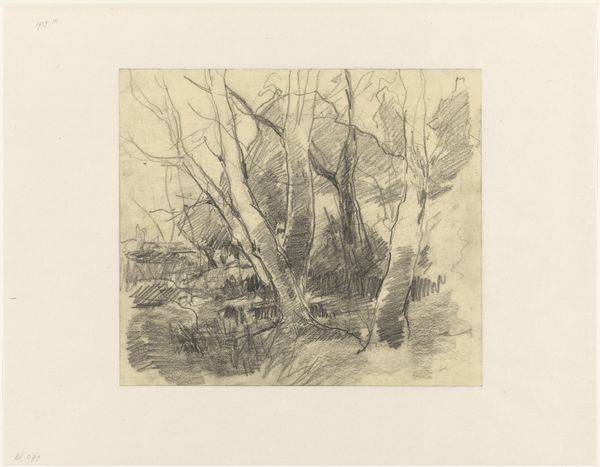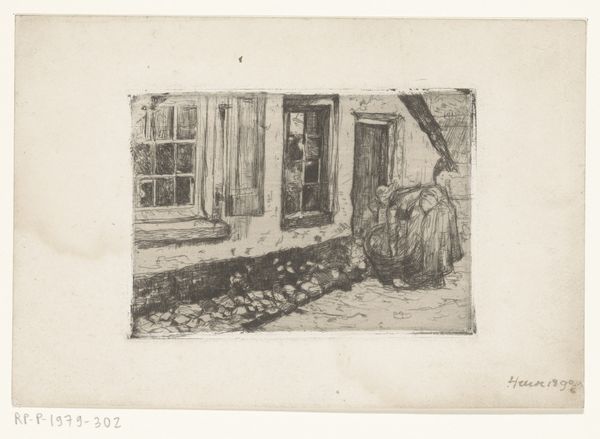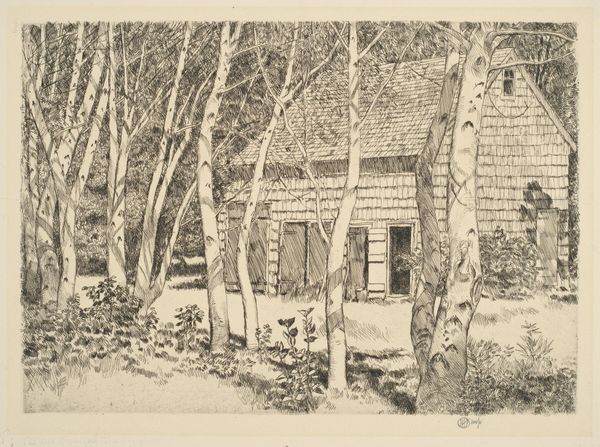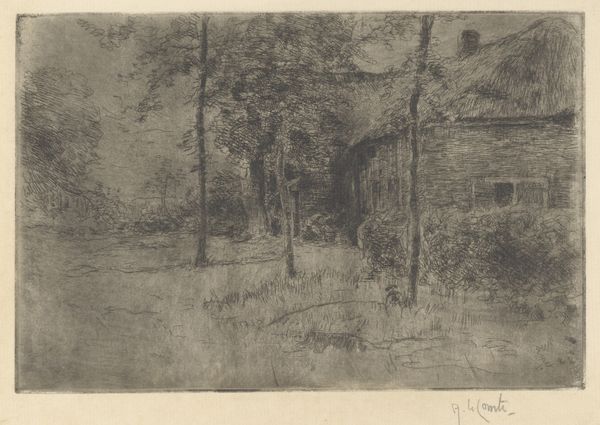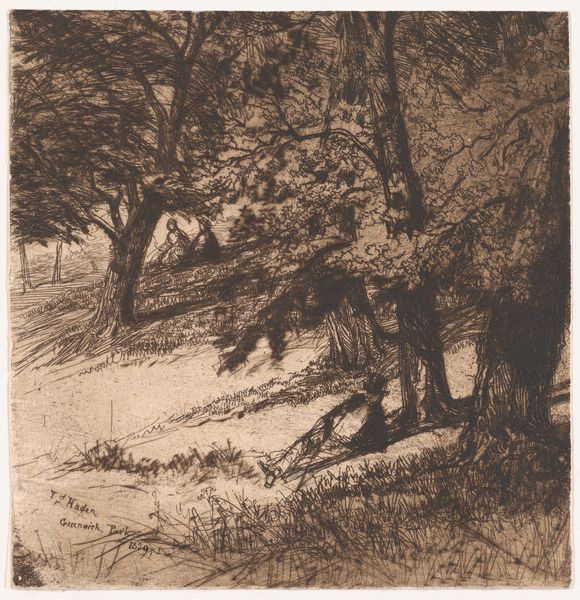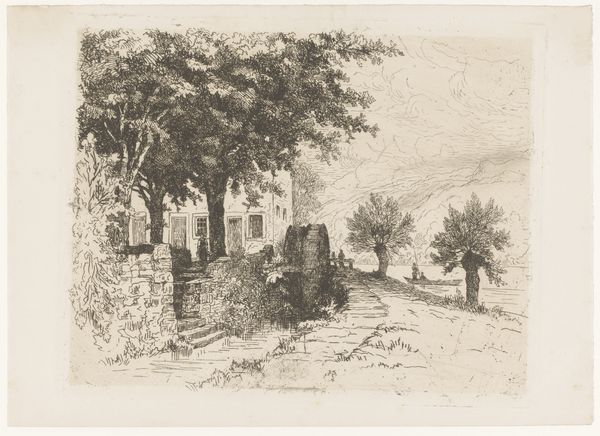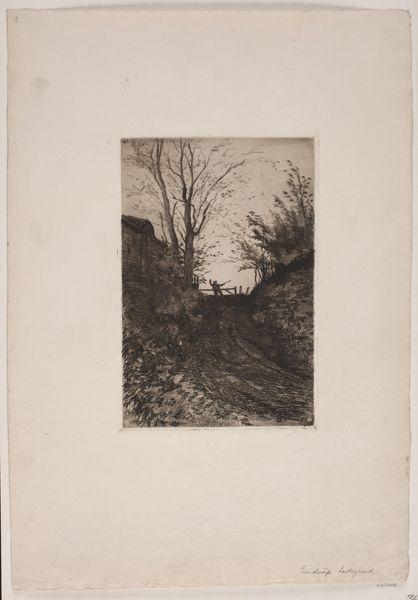
Dimensions: height 275 mm, width 320 mm
Copyright: Rijks Museum: Open Domain
Editor: Here we have "Garden by Half-Timbered House" etched by Simon Moulijn in 1919. It's a quiet scene, almost melancholic. All those finely etched lines give the print a wonderful texture. How do you interpret this work? Curator: It’s fascinating to consider this image through a lens that questions what "garden" means here. It isn't just nature; it's nature domesticated, existing in relation to this "half-timbered house." What does this pairing evoke for you? The controlled versus the wild? The owned versus the free? How does the very technique, etching, a process of controlled removal, speak to this tension? Editor: That’s a great point. I hadn't thought of the etching process itself reflecting control. It does feel very deliberate. So, are you saying the "garden" here becomes less about the plants themselves and more about what their arrangement, or the artist's representation of them, says about power dynamics? Curator: Exactly. Think about who has access to such a space. In 1919, a year after the end of World War I, this image whispers of longing for peace, stability, and perhaps even a yearning for an idealized past tied to the land. Whose idealized past is being centered and at whose expense? Does this scene present an exclusionary image of serene domesticity, inaccessible to many due to societal and economic inequalities? Editor: I see what you mean. It’s no longer just a pretty garden, but loaded with social context. I hadn't initially considered its post-war creation. Curator: Consider also, who had the privilege and time to create such work after such devastation. Editor: This makes me think about the choices we make when representing history, what we include and exclude, and how those choices shape our understanding of the past. Curator: Precisely. Hopefully this allows the viewer to begin to think critically not only about art, but society, too.
Comments
No comments
Be the first to comment and join the conversation on the ultimate creative platform.
